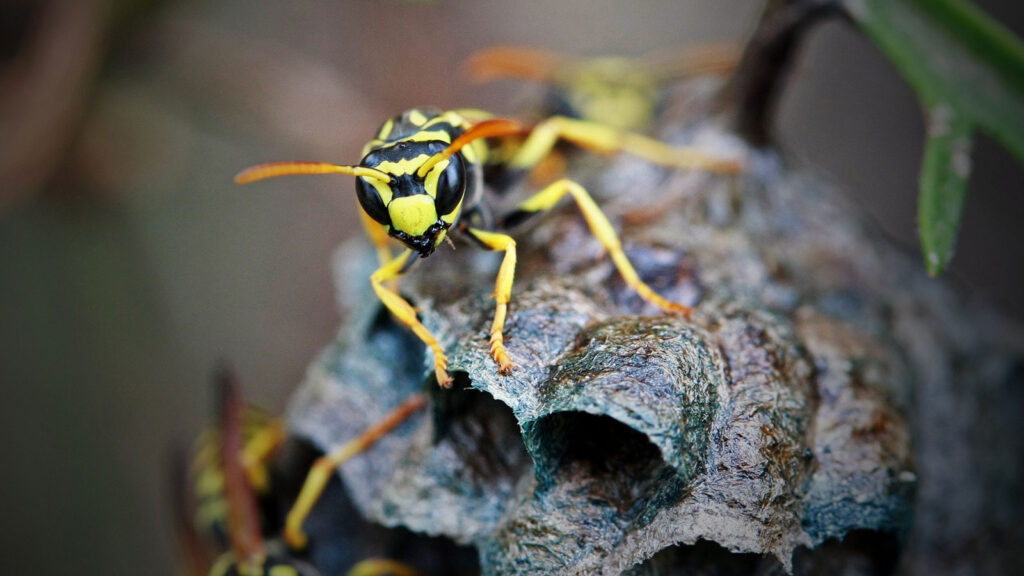
Many people believe that wasps are drawn to specific blood types, often associating them with a heightened risk of stings for individuals with certain blood. However, this is a common misconception. The truth is, wasps are not attracted to blood type at all. Their primary focus lies on obtaining essential nutrients from other sources. This article will delve into the fascinating world of wasps, debunking the myth surrounding blood type attraction and exploring what truly draws them to humans.
This comprehensive guide will cover the science behind wasp behavior, examining their dietary preferences, the factors that attract them to humans, and practical tips for avoiding encounters and preventing stings. By understanding these aspects, you can gain a clearer perspective on wasps and coexist peacefully with these fascinating creatures.
Wasps and Blood Type Myth
The notion that wasps are attracted to specific blood types is largely unfounded and lacks scientific evidence. While some insects, like mosquitoes, utilize carbon dioxide and body heat to locate their prey, wasps do not rely on blood type as a sensory cue. Their primary motivation for feeding stems from the need to obtain energy-rich sugars and proteins, which they acquire from various sources.
The misconception likely arises from anecdotal accounts or cultural beliefs that have been passed down through generations. It’s important to remember that these stories often lack scientific backing and can perpetuate misinformation.
Wasp Diet and Preferences
Wasps are omnivorous insects with diverse dietary preferences. Their primary food source consists of sugary substances like nectar, fruit juices, and honeydew secreted by aphids. These carbohydrates provide them with the energy needed for flight, foraging, and other essential activities. In addition to sugars, wasps also require protein for growth and development. They obtain this from sources such as insects, spiders, caterpillars, and even carrion.
The specific diet of a wasp species can vary depending on its habitat and availability of food resources. For instance, paper wasps are known to be more nectar-oriented, while yellow jackets have a greater preference for protein-rich foods. Understanding their dietary needs helps us comprehend their behavior and interactions with humans.
What Attracts Wasps to Humans
While wasps are not attracted to blood type, they can be drawn to certain scents and behaviors associated with humans. These include:
Sweet Scents
Wasps have a keen sense of smell and are particularly sensitive to sugary aromas. Perfumes, scented lotions, and even the natural sweetness of human sweat can attract them.
Food Residues
Leftover food and drinks, especially those containing sugar or protein, can act as potent attractants for wasps. It’s crucial to clean up spills promptly and store food securely to avoid attracting these insects.
Bright Colors
Wasps are attracted to bright colors, particularly yellow and orange. Wearing these hues near wasp nests or areas where they are prevalent can increase the risk of encounters.
Avoiding Wasp Encounters
Minimizing your chances of encountering wasps involves being aware of their habits and taking preventive measures:
- Maintain a Clean Environment: Regularly clean up food spills, dispose of garbage properly, and keep outdoor eating areas free of debris.
- Avoid Wearing Bright Colors: Opt for neutral colors when spending time outdoors, especially in areas where wasps are common.
- Be Mindful of Sweet Scents: Avoid wearing strong perfumes or scented lotions near potential wasp habitats.
Wasp Sting Prevention
While avoiding encounters is ideal, stings can sometimes occur. Here’s how to minimize the risk:
- Stay Calm: If a wasp approaches, remain calm and avoid swatting at it. Sudden movements can agitate them further.
- Move Away Slowly: Gradually retreat from the area while keeping an eye on the wasp. Avoid making direct eye contact, as this can be perceived as a threat.
- Cover Exposed Skin: When working outdoors or in areas with wasps, wear long sleeves and pants to protect your skin.
Conclusion
The belief that wasps are attracted to specific blood types is a misconception. Their primary focus lies on obtaining sugars and proteins from various sources. Understanding their dietary preferences and the factors that attract them to humans allows us to coexist peacefully with these fascinating creatures. By taking preventive measures, such as maintaining a clean environment and avoiding strong scents, we can minimize the risk of wasp encounters and stings. Remember, wasps play a vital role in our ecosystem by controlling insect populations and pollinating plants. Let’s appreciate their contributions while practicing responsible safety measures to ensure a harmonious relationship with these beneficial insects.
